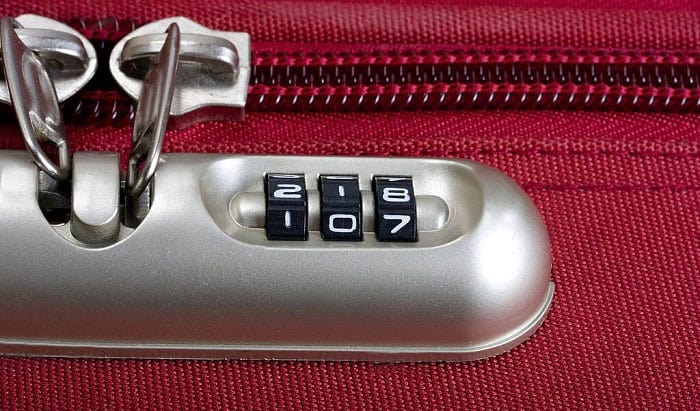Unlocking the Mystery: A Comprehensive Guide on How to Open a Locked Suitcase Without the Combination

Introduction:
Encountering a locked suitcase without the combination can be a frustrating and anxiety-inducing situation, especially when you’re eager to access your belongings. Whether you’ve forgotten the combination, the lock malfunctions, or the combination is unknown due to various reasons, this comprehensive guide provides a range of strategies to help you unlock your suitcase without the combination, ensuring a stress-free resolution to an otherwise challenging scenario.
I. Assess the Situation: Understand the Lock Type and Brand:
- Combination Locks:
Identify the type of combination lock on your suitcase. Common varieties include three-digit and four-digit combination locks. Some combination locks have resettable combinations, while others come with default settings.
- Keyed Locks:
Determine if your suitcase has a keyed lock. In this case, you may need to focus on obtaining a duplicate key or using alternative methods to open the lock.
- TSA-Approved Locks:
If you’re dealing with a TSA-approved lock, it may have a keyhole for TSA agents to access and inspect your luggage. Understanding the lock type will guide your approach to unlocking it.
II. Try Default Combinations: Investigate Common Patterns:
- Factory Settings:
Many combination locks come with factory-set combinations. Try common default combinations such as “000” or “1234.” Consult the manufacturer’s website or documentation for any specific default combinations associated with your lock.
- Birthday or Special Dates:
If you’ve set your own combination, consider whether it might be a significant date like a birthday or anniversary. Experiment with variations of these dates to see if you can recall the correct combination.
- Sequential or Repeating Numbers:
Some individuals use sequential or repeating numbers as combinations. Experiment with combinations like “123,” “456,” or “1122” to test whether this approach might unlock the suitcase.
III. Check for a Reset Button or Lever: Explore Internal Mechanisms:
- Resettable Locks:
If your combination lock is resettable, look for a reset button or lever. This feature allows you to change the combination. Consult the lock’s user manual or the manufacturer’s website for instructions on how to reset the combination.
- Hidden Reset Button:
Some combination locks have a hidden reset button that can be accessed using a small tool or pin. Examine the lock closely to identify any indents or holes that may conceal a reset button.
- Internal Mechanisms:
Gain insight into the internal mechanisms of your lock. In some cases, applying gentle pressure or turning the lock’s dials while applying tension may reveal the correct combination.
IV. Use a Shim or Luggage Strap: Non-Destructive Entry Methods:
- Shimming Technique:
Shimming involves using a thin piece of metal, such as a paperclip or shim, to manipulate the internal components of the lock. Insert the shim between the lock’s latch and the wheel, applying gentle pressure to disengage the mechanism.
- Luggage Strap Method:
Wrap a strong and flexible luggage strap around the suitcase, focusing on the area where the lock is located. Apply pressure by pulling the strap in the direction that would release the lock. This method may help release the tension on the internal mechanism.
- Professional Locksmith Assistance:
If you are uncomfortable attempting to unlock the suitcase yourself, consider seeking assistance from a professional locksmith. They have the expertise and tools to open locks without causing damage.
V. Duplicating Keys or Obtaining a Master Key:
- Key Duplication:
If your suitcase has a keyed lock, explore options for key duplication. Visit a locksmith or contact the suitcase manufacturer to inquire about obtaining a duplicate key for your lock.
- Master Keys for TSA-Approved Locks:
For TSA-approved locks, TSA agents have master keys to access locked luggage. Reach out to the TSA and provide them with the necessary information to request assistance in unlocking your suitcase.
- Manufacturer Assistance:
Contact the suitcase manufacturer’s customer support for guidance on obtaining a replacement key or unlocking your suitcase. They may provide specific instructions or assistance tailored to their products.
VI. Drilling or Cutting as a Last Resort: Proceed with Caution:
- Drilling the Lock:
As a last resort, drilling the lock may be an option. Use a drill with a bit suitable for metal and drill at the center of the lock. Be cautious, as this method may damage the suitcase and is irreversible.
- Cutting the Lock:
Cutting the lock with bolt cutters is another last-resort option. This approach is effective for cable locks. Exercise caution to avoid damaging the suitcase or its contents.
- Note on Irreversible Methods:
Keep in mind that drilling or cutting the lock is irreversible and may result in damage to your suitcase. Exhaust all other options before resorting to these methods, and consider the potential consequences.
VII. Preventive Measures for Future Travel: Learn from the Experience:
- Document the Combination:
After resolving the locked suitcase situation, document the combination in a secure location. Keep a backup in a separate place, such as a digital note on your phone or a physical note in a secure wallet.
- Use TSA-Approved Locks:
Consider using TSA-approved locks, which allow airport security personnel to open and inspect your luggage without damaging the lock. This can prevent unnecessary lockouts during security checks.
- Test the Lock Before Travel:
Before embarking on your next journey, test the lock to ensure it functions correctly. Confirm that you have the combination or key, and address any issues proactively.
VIII. Conclusion: Unlocking Peace of Mind for Your Travels:
In conclusion, finding yourself with a locked suitcase and no combination can be a challenging situation, but with patience and a systematic approach, you can navigate the process of unlocking it. Whether you explore default combinations, internal mechanisms, non-destructive entry methods, or seek professional assistance, the key is to remain calm and methodical in your efforts. Remember to prioritize non-destructive methods and, if all else fails, consider seeking assistance from professionals or the manufacturer. By learning from the experience and taking preventive measures for future travel, you can enhance the security of your belongings and unlock peace of mind for your future journeys. Safe travels await, and with this comprehensive guide, you’ll be well-prepared to handle any unexpected challenges that may come your way.




